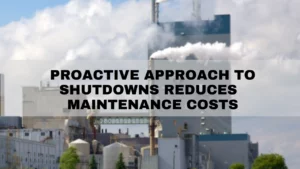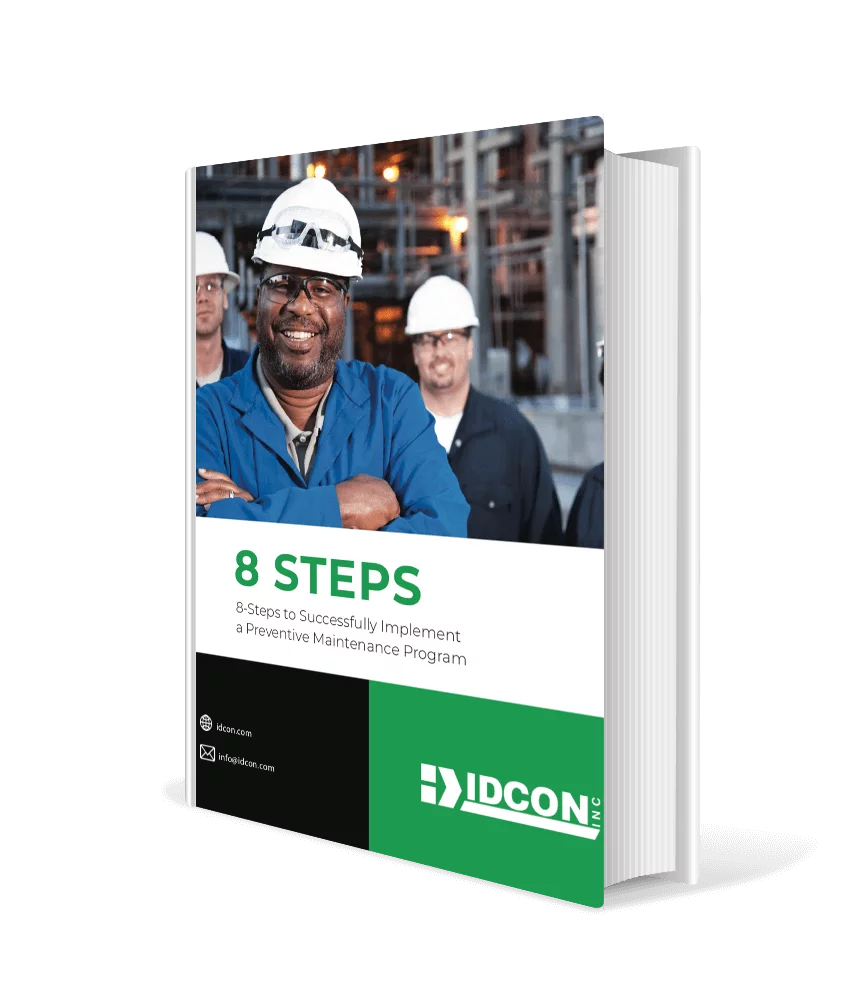How do you plan your family vacation? In most cases you have to check when you can take off from work, decide where to go, make the arrangements and book the trip, decide what to bring, read up on the activities etc.
If you don’t do this early enough it is very likely that you are not going to have the vacation as you expected, or it may cost you more. The scenario of vacations going wrong due to bad planning can be found in many movies and TV shows.
Planning and scheduling for a shutdown is similar to that family vacation.
If you don’t have a process and plan in place it’s not going to turn out as expected. Some of the most common issues you’ll run into when managing a typical annual shutdown include:
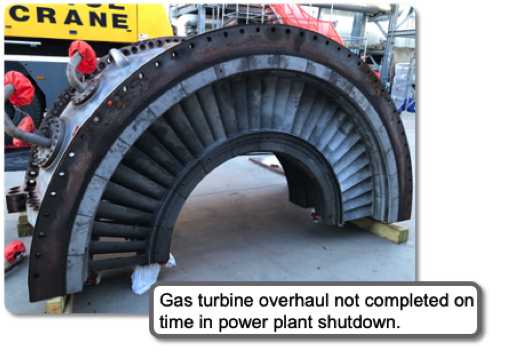
- Budget overruns
- Delayed start-ups
- Planned and scheduled work not completed
- Safety incidents and even lost time
What can you do to improve the execution of your annual shutdown?
The best approach is to divide the shutdown preparation into phases.
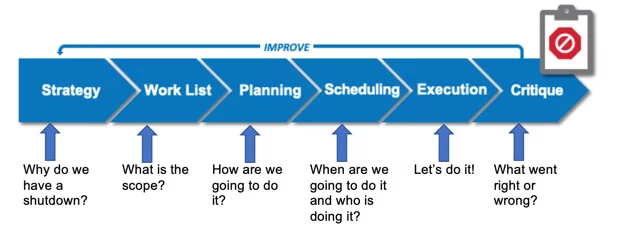
Some of the benefits of reviewing the 6 phases include Overall Operating Efficiency (OEE) and maximize the quality and quantity of work performed. Selection and execution of the “Right Work” by evaluating risk, reliability and urgency.
Shutdown and start-up times occur as planned and scheduled, and the use communication as tools and visual management to improve effectiveness.
I’ve had many clients who were skipping the strategy phase in planning their shutdowns. Without developing and reviewing your shutdown strategy you’re probably running into those common problems (budget or time overruns, safety incidents, or work not completed).
What should be included in a Shutdown Turnaround Optimization Process Strategy review?
- Develop or review the Vision, Mission, and Goals for shutdowns
- The Shutdown drivers and business requirements
- Developing the Countdown Schedule (T-minus schedule)
- Safety policies and training needs
Vision, Mission and Goals for Shutdowns
Defining these will give you a clear picture of what your plant wants to accomplish and be instrumental in critiquing the performance of your shutdown. Below is an example:
Vision:
- Manage equipment downtime using resources efficiently
Mission:
- Operations, maintenance and engineering work together as a team to apply Shutdown best practices
Goals:
- Drive lost time and safety incidents to ZERO
- Drive unscheduled downtime to ZERO
- To put processes in place that will manage resource efficiency, provide teamwork, and using best practices.
Shutdown Drivers
Shutdown drivers are Key business inputs that will determine the overall shutdown length, timing, and resources based on the overall corporate/organization’s business goals.
Typical shutdown business drivers are:
- Market demand, orders, inventories
- Production schedules and seasonal downtime
- Regulatory inspections
- The service life of critical equipment
- Preventive and corrective maintenance
- Budgets
- Vacation, holidays, and weather
- Capital projects and new product lines
The focus of the plant management team during the Strategy Phase is to determine the shutdown frequency, interval and duration, the organization and controls, the use of contractors, future shutdowns, and the strategy for the current shutdown.
The results that the management team is looking for is increased run time, decreased frequency, optimized duration and excellent coordination with the overall business and supply chain.
Safety and Training
Shutdowns increase the risk of safety incidents and lost time. The reason being that contractors are not familiar with the plant and the safety policies.
Many jobs are being done at the same time and in close proximity. Starting and stopping the process increases the exposure to risk. Jobs are done less frequently and to a higher degree of complexity. People can be fatigue due to work schedules and working longer hours.
Shutdown Countdown Schedule
If you aren’t using a countdown schedule (T-minus schedule) to help you manage your shutdown, you may find that you’ve missed some key tasks in the middle of your shutdown. By working as a team to develop your countdown schedule, you’re ensuring that all key stakeholders know cut-off times, and who’s responsible for tasks.
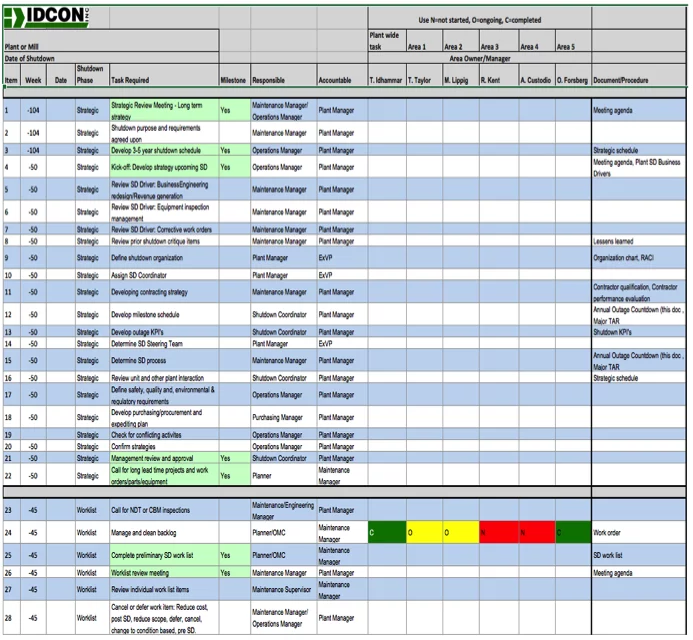
What’s included:
- Works like a t- schedule, counting down. In the example it starts at T-104 weeks before the shutdown execution.
- Description of task, meeting, milestone, to be prepared
- Responsibility and accountability
- Functional area/process area responsibilities
- Status: not started, ongoing, and completed
Figure 1: Example of a countdown schedule. Attend our next Shutdown Turnaround Optimization Process training to get our template.
What results can you expect from doing a Shutdown Strategy review?
- A 3 to 5-year shutdown plan and outlook in place
- For the current annual shutdown:
- Shutdown drivers identified
- Coordination with other plants
- Shutdown organization in place
- Steering team participants and roles
- Contractor strategy
- Develop countdown schedule (t-minus schedule)
- Develop checklists for all major milestones
- Develop agendas for meetings
- Determine budget and controls
If you need to optimize your Shutdown Turnarounds process, join us for our next training class or bring us on-site to evaluate your current process and train your team.
Subscribe to our YouTube Channel for new Reliability and Maintenance information.

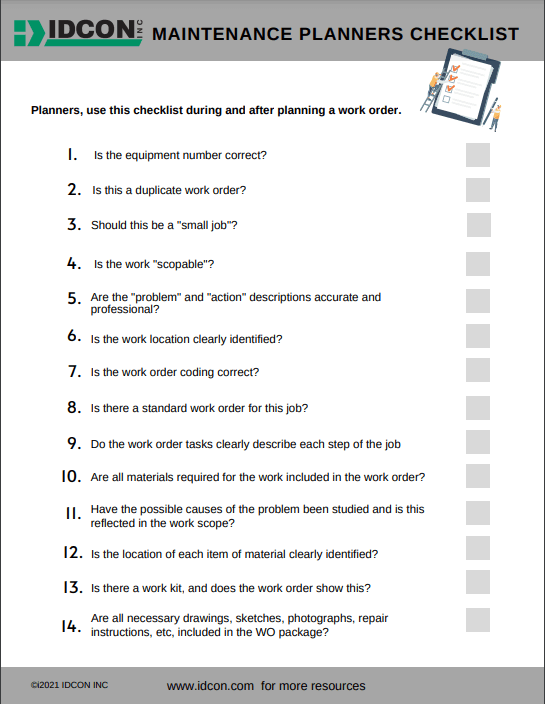
Download IDCON's Maintenance Planners Checklist (part 1)
This 28 point checklist is a great starter document make sure you’re on top of your maintenance planning.

